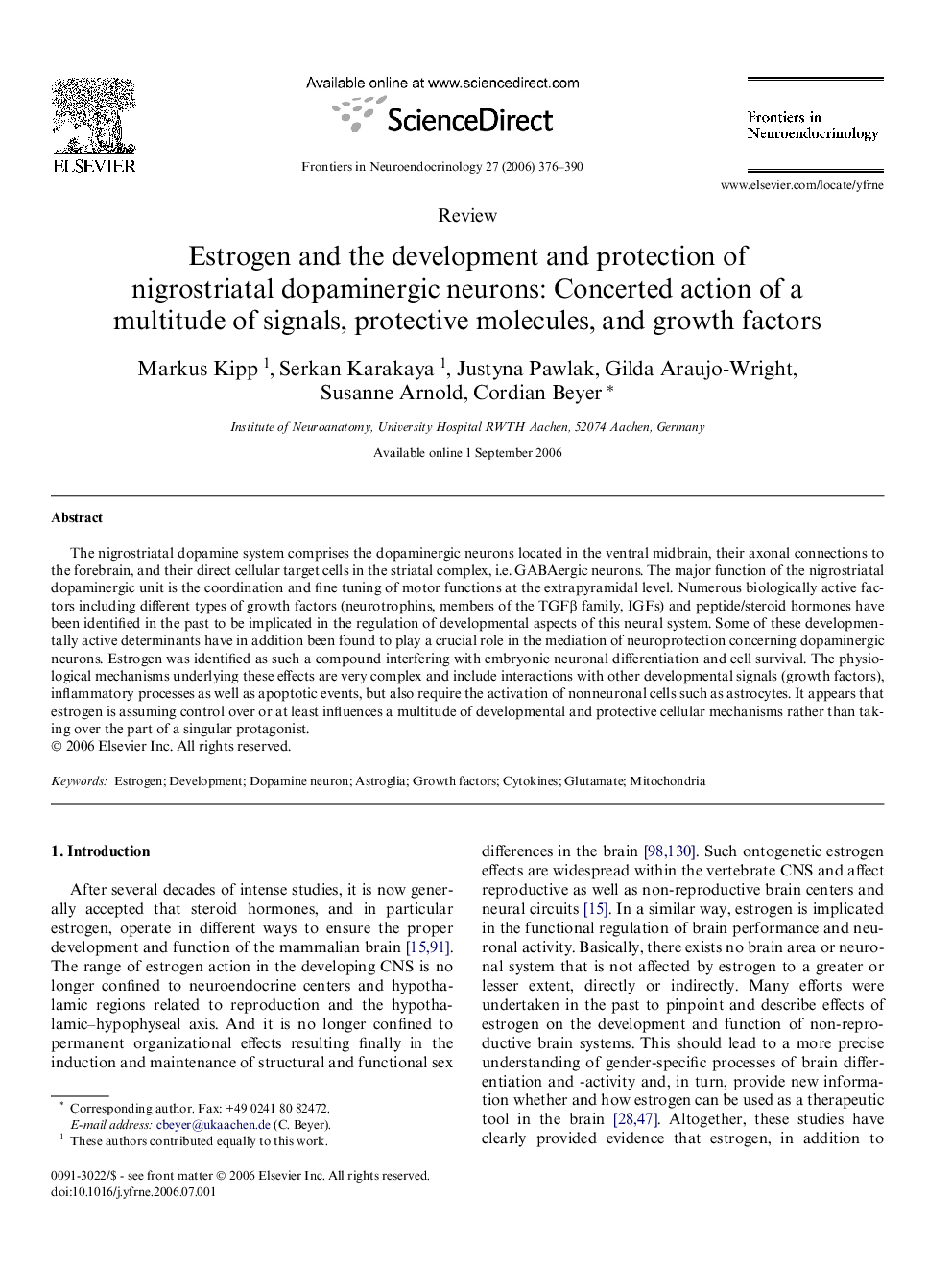| Article ID | Journal | Published Year | Pages | File Type |
|---|---|---|---|---|
| 2799604 | Frontiers in Neuroendocrinology | 2006 | 15 Pages |
The nigrostriatal dopamine system comprises the dopaminergic neurons located in the ventral midbrain, their axonal connections to the forebrain, and their direct cellular target cells in the striatal complex, i.e. GABAergic neurons. The major function of the nigrostriatal dopaminergic unit is the coordination and fine tuning of motor functions at the extrapyramidal level. Numerous biologically active factors including different types of growth factors (neurotrophins, members of the TGFβ family, IGFs) and peptide/steroid hormones have been identified in the past to be implicated in the regulation of developmental aspects of this neural system. Some of these developmentally active determinants have in addition been found to play a crucial role in the mediation of neuroprotection concerning dopaminergic neurons. Estrogen was identified as such a compound interfering with embryonic neuronal differentiation and cell survival. The physiological mechanisms underlying these effects are very complex and include interactions with other developmental signals (growth factors), inflammatory processes as well as apoptotic events, but also require the activation of nonneuronal cells such as astrocytes. It appears that estrogen is assuming control over or at least influences a multitude of developmental and protective cellular mechanisms rather than taking over the part of a singular protagonist.
